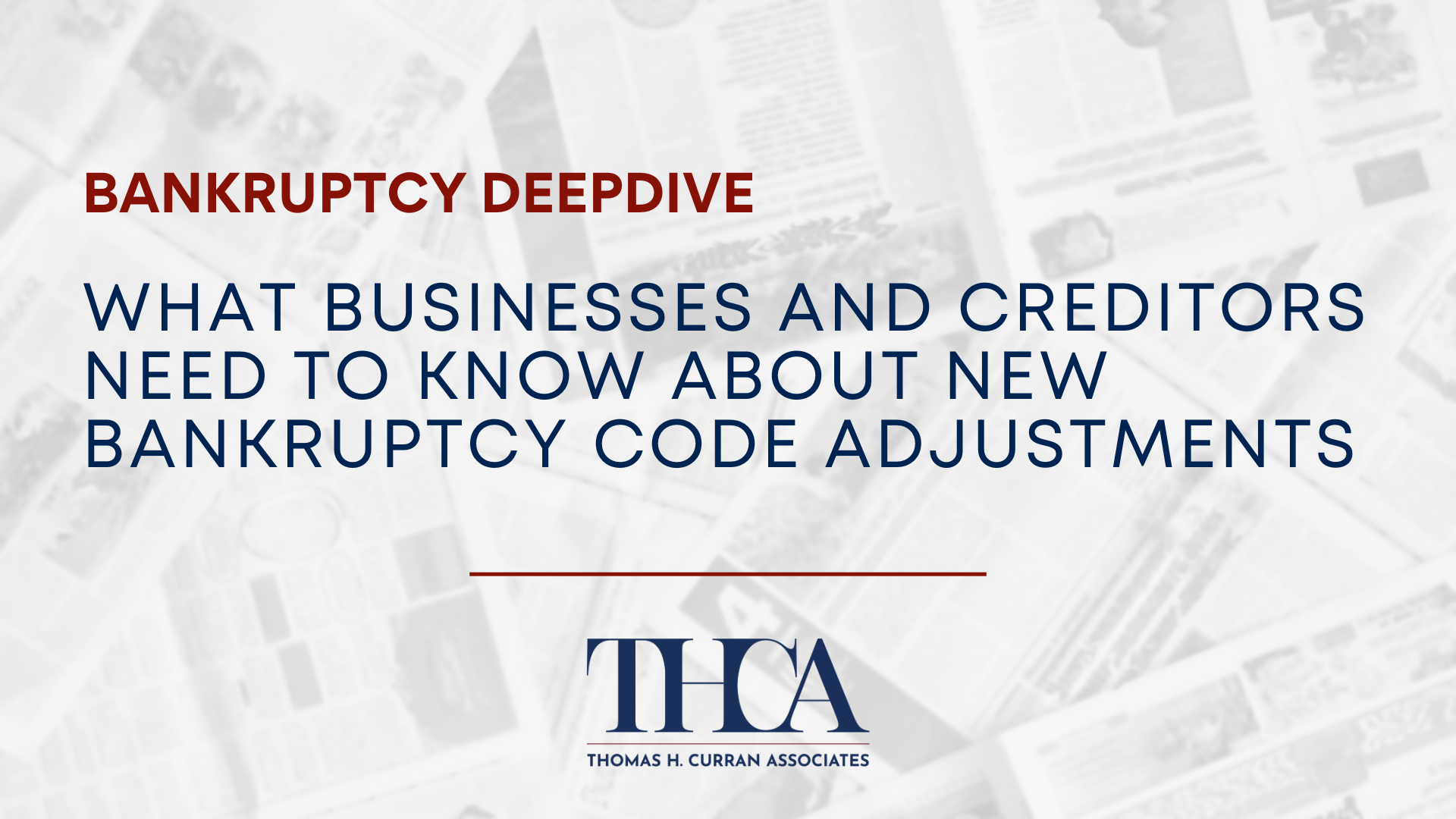On April 1, 2025, new adjustments to the Bankruptcy Code dollar thresholds took effect. 11 U.S.C. § 104 mandates these adjustments every three years to account for inflation.[1] This year’s adjustments represent a 13.2004% increase across various provisions.[2] Nearly every bankruptcy provision tied to a dollar amount is affected, which carries significant implications for debtors, businesses, and creditors.
These adjustments expand eligibility for Chapter 13 bankruptcy. The debt limit has risen from $465,275 to $526,700 for unsecured debts and from $1,395,875 to $1,580,125 for secured debts.[3] This increased limit affords debtors greater flexibility in opting for a repayment plan instead of Chapter 7 liquidation. While increased filings under Chapter 13 could extend repayment timelines for creditors, the likelihood of receiving some repayment increases in such cases, as opposed to potentially nothing in Chapter 7 liquidation. These increased thresholds may also affect creditors’ ability to recover debts through involuntary proceedings. The minimum aggregate amount for an involuntary petition rose from $18,600 to $21,050, which limits creditors’ ability to force debtors into bankruptcy by increasing the requisite claim amount.3
Increased thresholds also affect businesses’ options when facing insolvency, particularly when filing for bankruptcy under Chapter 11. The debt limit for small business debtors seeking to file under Subchapter V of Chapter 11 has increased from $3,024,725 to $3,424,000.3 Subchapter V offers a more cost-effective reorganization process for small businesses than traditional Chapter 11. This expanded eligibility may enable more businesses to reorganize and continue operations rather than liquidating.
Legal professionals and financial advisors should review these changes carefully to ensure clients make informed decisions about restructuring and debt resolution. The long-term impact of these adjustments will become clearer as courts begin applying the updated standards in real-world cases.
THCA helps businesses and creditors navigate the complexities of the new bankruptcy code changes to achieve the best possible legal and financial outcomes.
For more information, please contact us at +1 (617) 207-8670 or visit https://thcalaw.com/contact/
[1] https://library.nclc.org/article/april-1-increase-federal-bankruptcy-exemptions-other-dollar-amounts-0
[2] https://www.federalregister.gov/documents/2025/02/04/2025-02207/adjustment-of-certain-dollar-amounts-applicable-to-bankruptcy-cases
[3] https://natlawreview.com/article/bankruptcy-dollar-amounts-set-rise-significantly-april-1-2025

